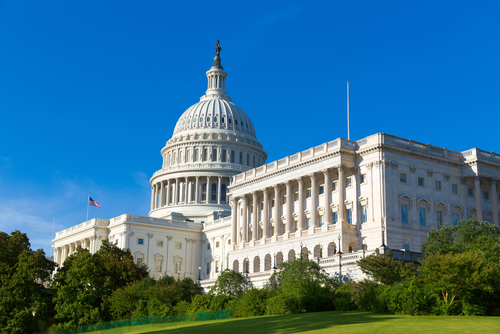US bill targets Consumer Financial Protection Bureau revamp
The US Consumer Financial Protection Bureau (CFPB) is the target of a bill that includes myriad changes to its responsibilities and structure, reports Paybefore (Banking Technology‘s sister publication).
US representative Jeb Hensarling (Republican, Texas) has pulled the trigger, reintroducing legislation that has the Dodd-Frank Act squarely in its crosshairs. The act comprises major changes to financial regulation in the US – with the CFPB included.
Hensarling, a Financial Services Committee chairman, unveiled the nearly 600-page Financial Choice Act of 2017 (HR 10), which would overhaul the CFPB and end taxpayer-funded bailouts of large financial institutions, among other mandates.
His bill includes giving the CFPB a dual mission of consumer protection and promoting competitive markets – with all proposed rules subject to a cost-benefit review by a newly formed Office of Economic Analysis, according to an executive summary of the bill.
Like the previous version of the legislation, HR 10 would require the agency to obtain permission before collecting consumers’ personally identifiable information, and it would be subject to the congressional appropriations process. The bill also would establish an independent, Senate-confirmed inspector general to oversee the CFPB. That provision mirrors legislation US Senator Rob Portman (Republican, Ohio) introduced in March.
In a departure from Hensarling’s previous version of the Financial Choice Act, which called for Director Richard Cordray’s position to be replaced with a bipartisan, five-member commission, the new bill calls for the agency to be led by a single director removable by the president at will. Also, the bureau would be renamed the Consumer Law Enforcement Agency (CLEA). Since President Trump took office, a plethora of bills have been introduced to limit the power of the CFPB, change its structure or even abolish the agency.
The legislation also goes after what Hensarling calls “too big to fail” bank bailouts with measures that include retroactively repealing the Financial Stability Oversight Council’s authority to designate firms systematically important FIs and prohibiting the use of the Exchange Stabilization Fund, an emergency reserve fund of the US Treasury, to bailout financial firms and creditors.
“For banks that fail, there will be bankruptcy, not bailouts,” Hensarling said when the bill was introduced. The bill “lifts bureaucratic red tape intended for big banks on Wall Street off of community banks and credit unions on Main Street. It expands access to capital for small businesses and innovative companies so that they can grow and create jobs, [which] will foster economic growth for all Americans, not just those at the top.”
Hensarling also says the bill would impose harsher penalties for financial fraud and insider trading, and increase transparency of financial regulations’ costs to state and local governments and private sector entities. The House Financial Services Committee is scheduled to begin its markup of HR 10 today (2 May).
Meanwhile, Congressional negotiators appear to have reached a bipartisan agreement late in the day on 30 April concerning a $1 trillion federal funding deal to avoid a government shutdown, according to Reuters. The House and Senate still must approve the agreement before Friday (5 May) or else thousands of federal employees will face layoffs or work without pay until the budget issue is resolved. The House is expected to vote early in the week and send the agreement to the Senate for approval before Friday’s deadline.












































